Saudi Arabia seen from above
-
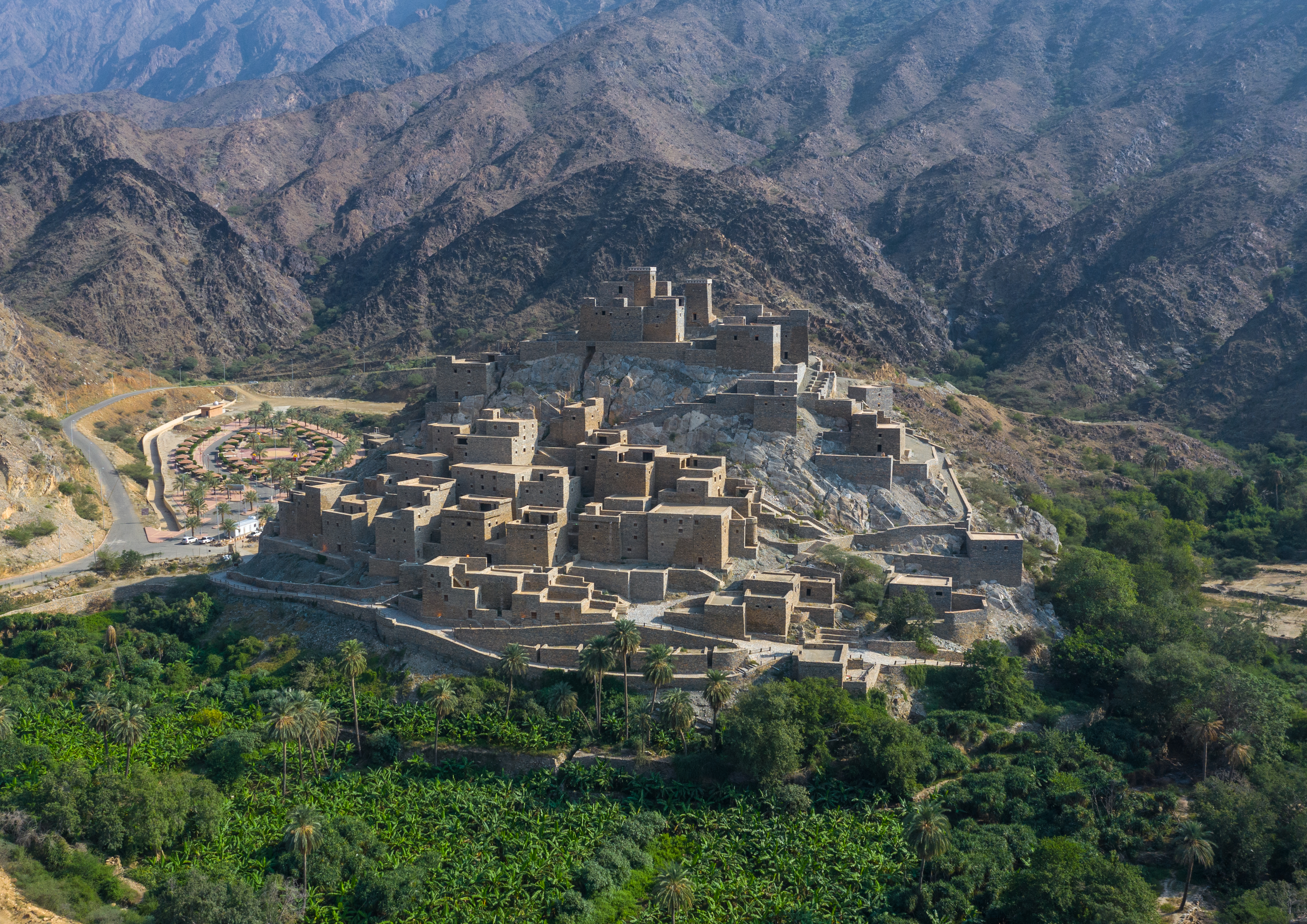
-
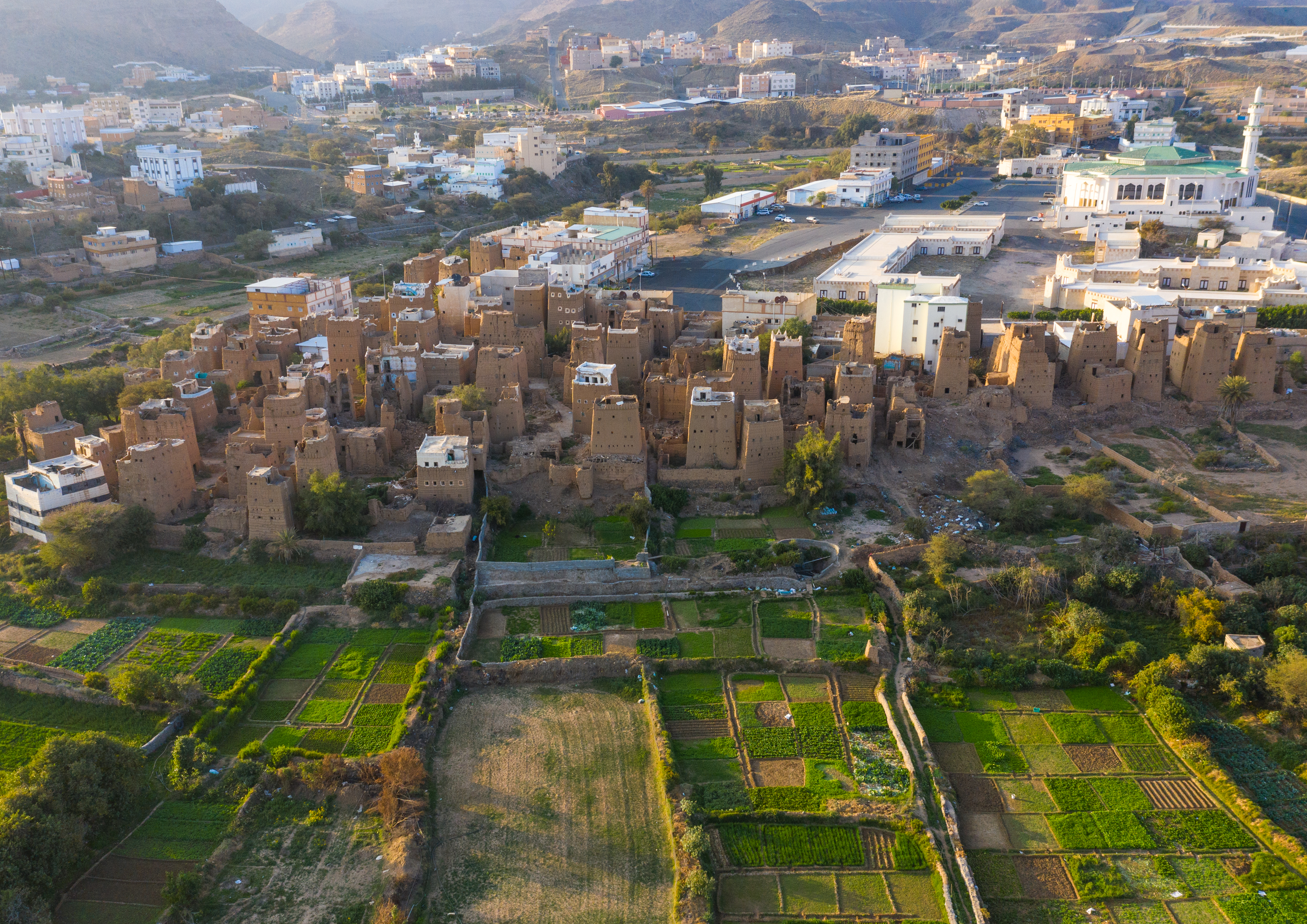
A view of an old village with traditional mud houses and gardens on the outskirts of the southern Saudi city of Dhahran Al Janub. The architecture recalls the famous city of Shibam in Yemen, known as the ʹManhattan of the desertʹ. Yemen is just 10km away. Dhahran Al Janub may not be in the desert, but deserves the nickname of Manhattan just the same. In former times, the well-tended gardens provided an escape route for occupants fleeing tribal raids -
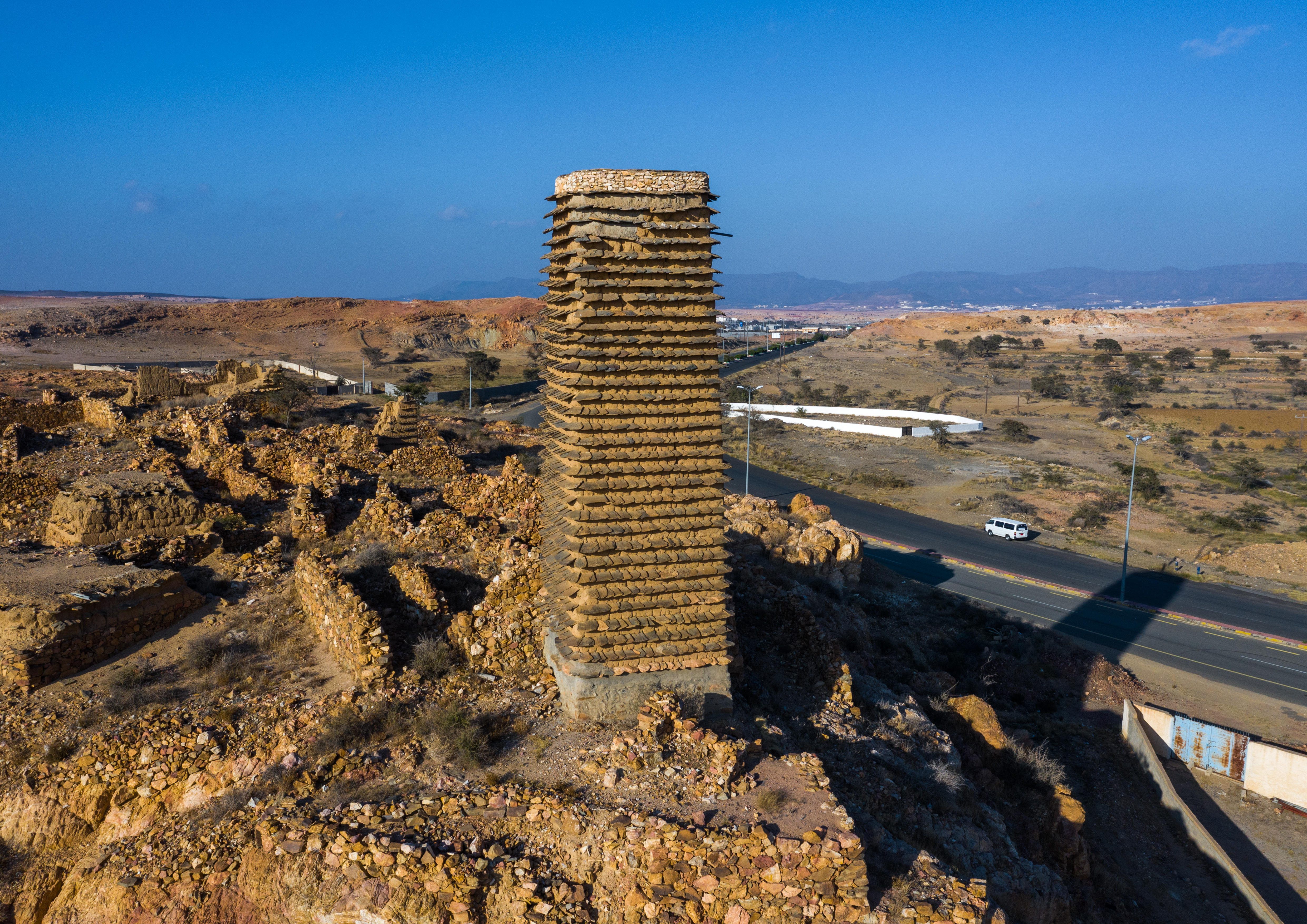
A stone and mud watchtower built with slates in Asir province of Saudi Arabia. Watchtowers served a dual purpose: monitoring enemy movements in the neighbourhood and keeping an eye on crops in this arid area. Nowadays, dotted along the main roads, they have became the symbol of Asir province -
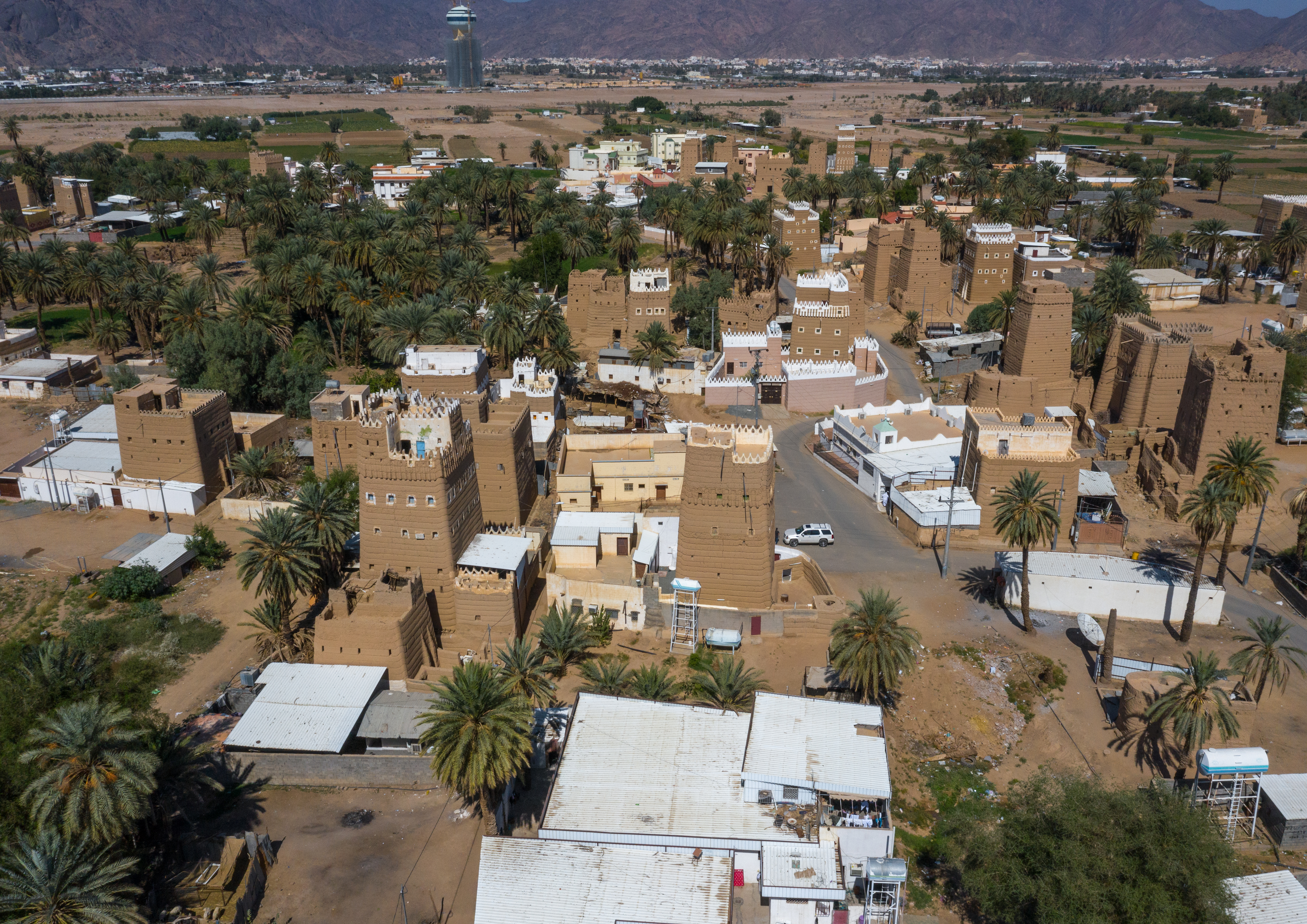
An ancient village with traditional mud houses close to the south-western city of Najran. More and more houses are being abandoned in favour of modern abodes, but Saudi families like to keep them for weekend getaways or for social events like weddings or get-togethers during Ramadan. Frequent use helps conserve these houses, many of which are over 200 years old. Many Saudis prefer to build a modern house close to the old family home -
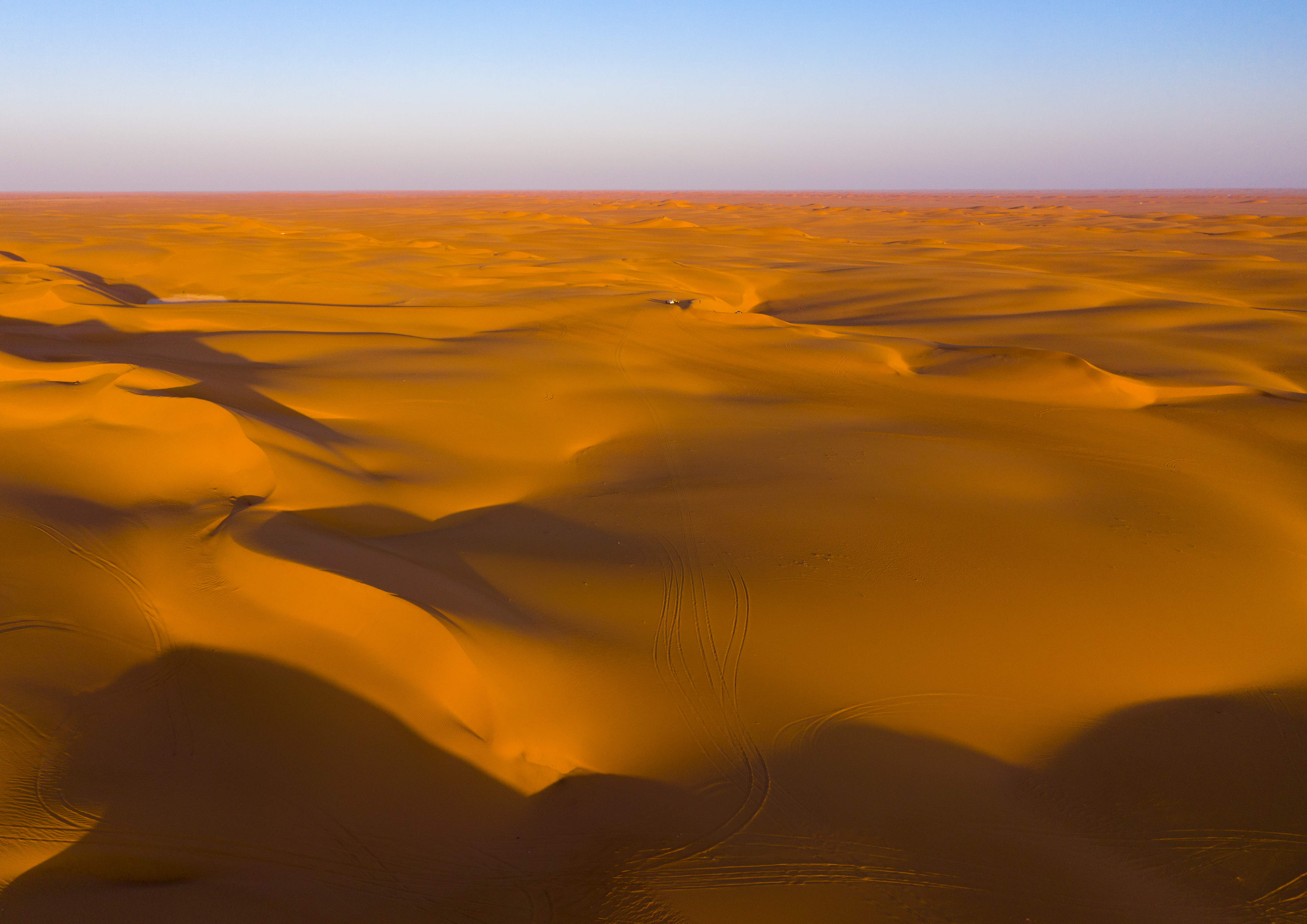
From the centre of Najran, it only takes a few minutes to reach the golden sands of the desert – entering the Rub Al Khali or 'empty quarter'. This was one of the spots visited by the late British adventurer Wilfred Thesiger. A local Saudi rabbit hunter who had lost his greyhound took advantage of the drone screen to locate his dog -
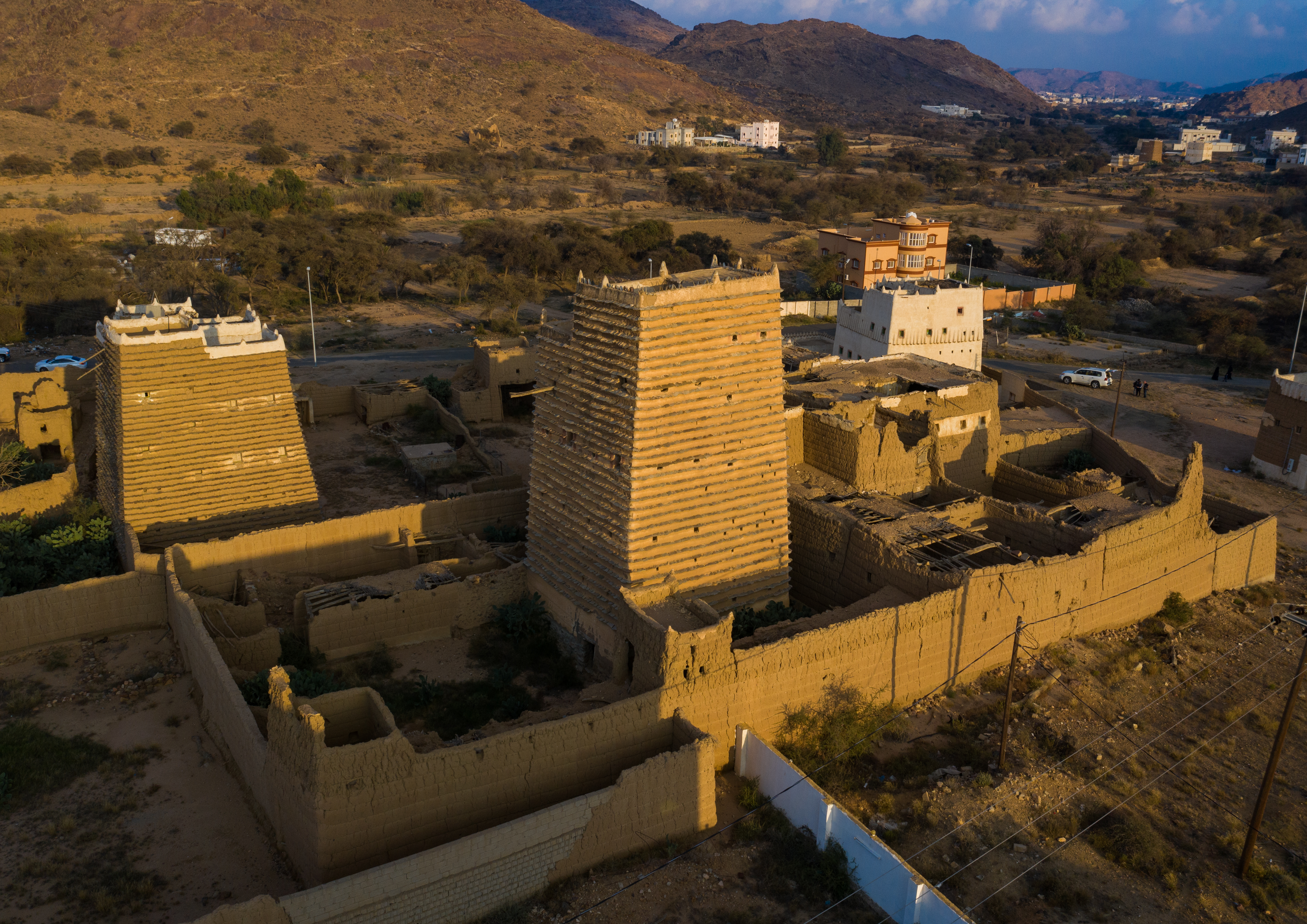
Many imagine the Kingdom to be full of luxury buildings and signs of wealth, but outside the main cities, the country remains rural. This old village with traditional mud houses is in Asir province. The houses are called ʹmidmakhʹ. They may have up to seven floors. The thick walls are the best way to keep temperatures cool in summer. At the top, there are terraces to get fresher air -
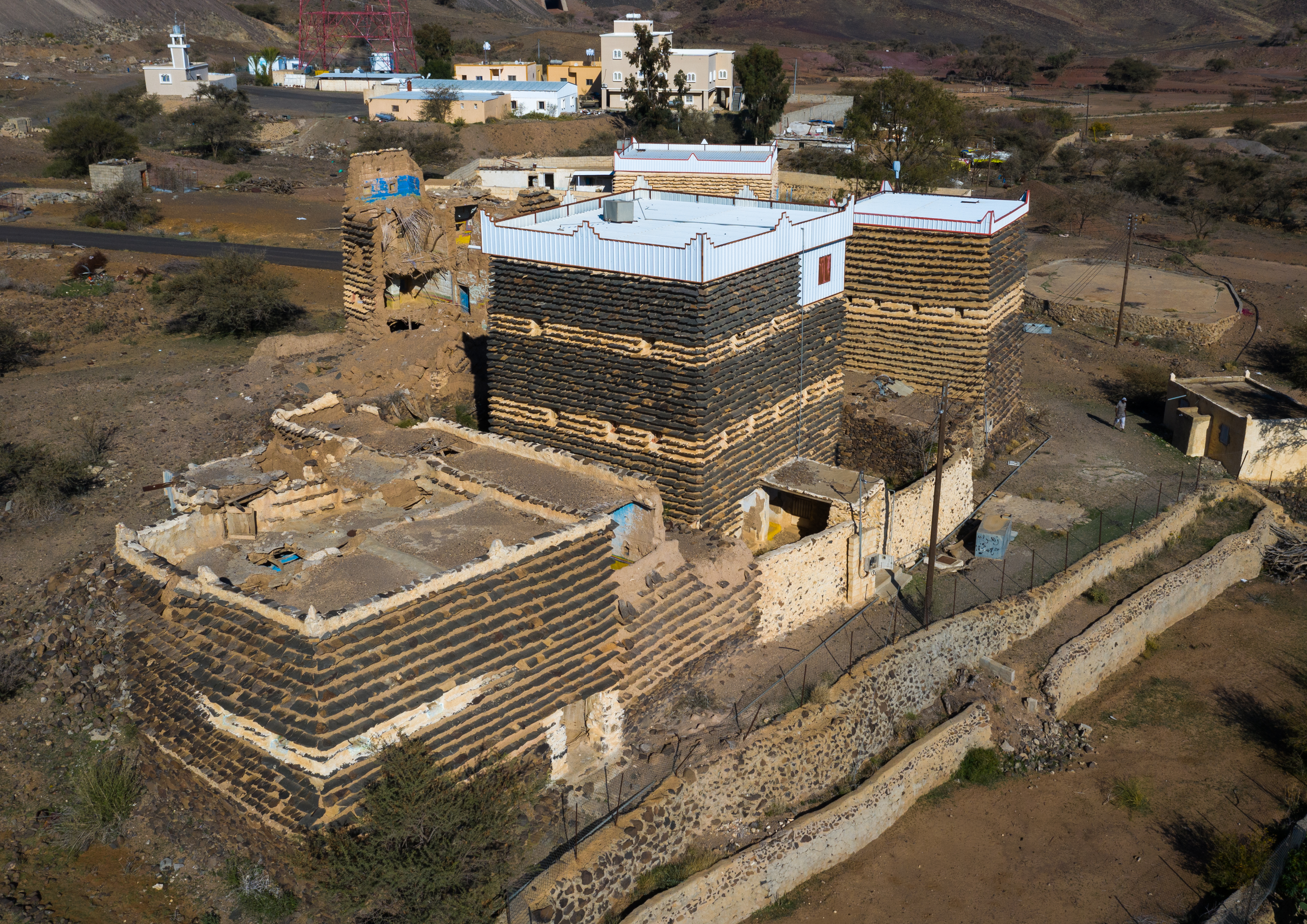
A black stone and mud house built with slates in Sarat Abidah village. While many people think Saudi Arabia is just a desert, the area is occasionally hit by heavy rain and the angled slates on these buildings help prevent water from getting inside and destroying the walls. The white corrugated metal roofs indicate houses that have been newly renovated -
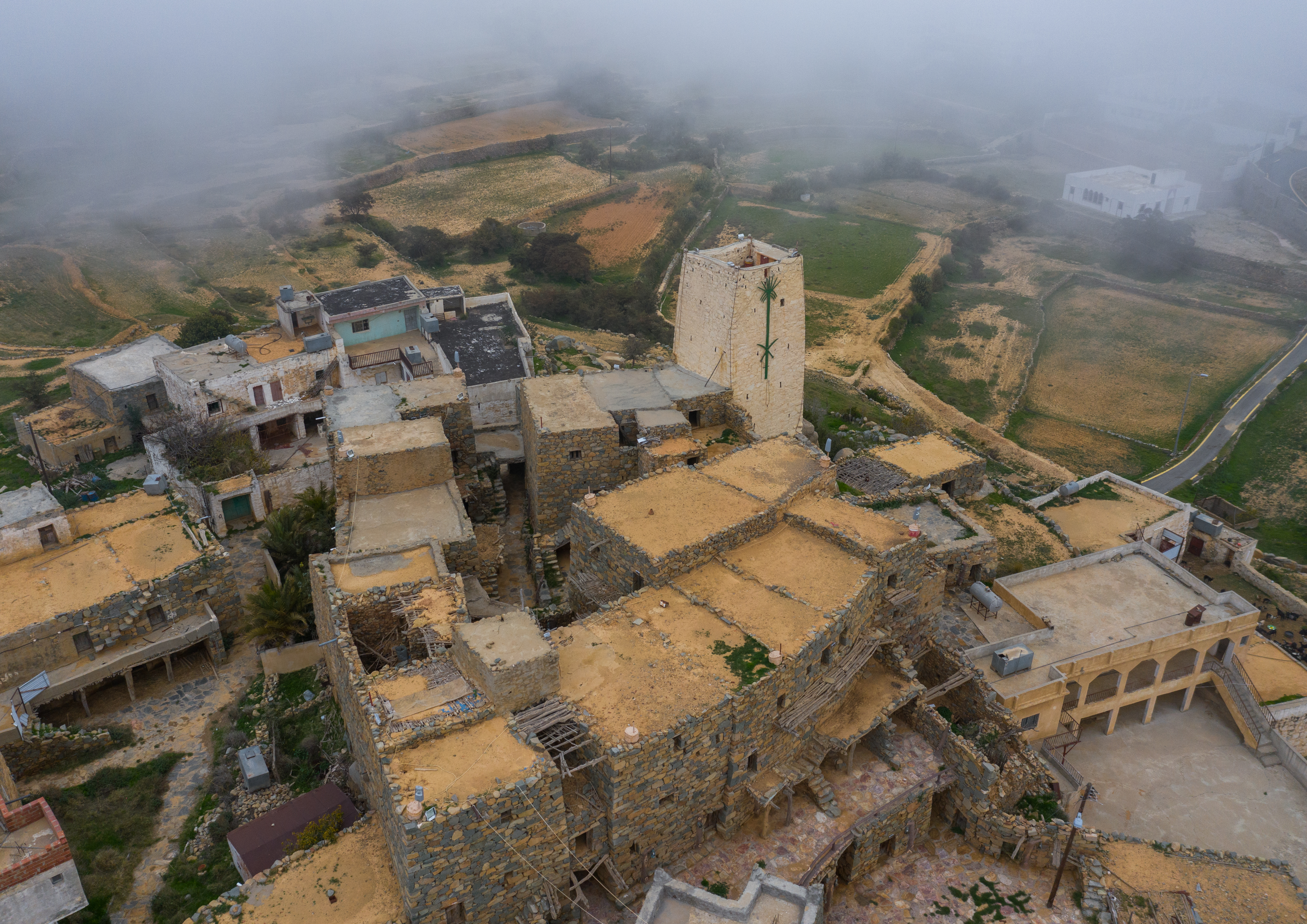
A view of traditional stone-built houses in the village of Al Olayan. High up in the mountains fog is nothing unusual. The people from the lowlands around Riyadh enjoy driving up there in the holidays to experience the rain and the fog – after all, down on the plain temperatures soar to above 40°C and there is no rain at all -
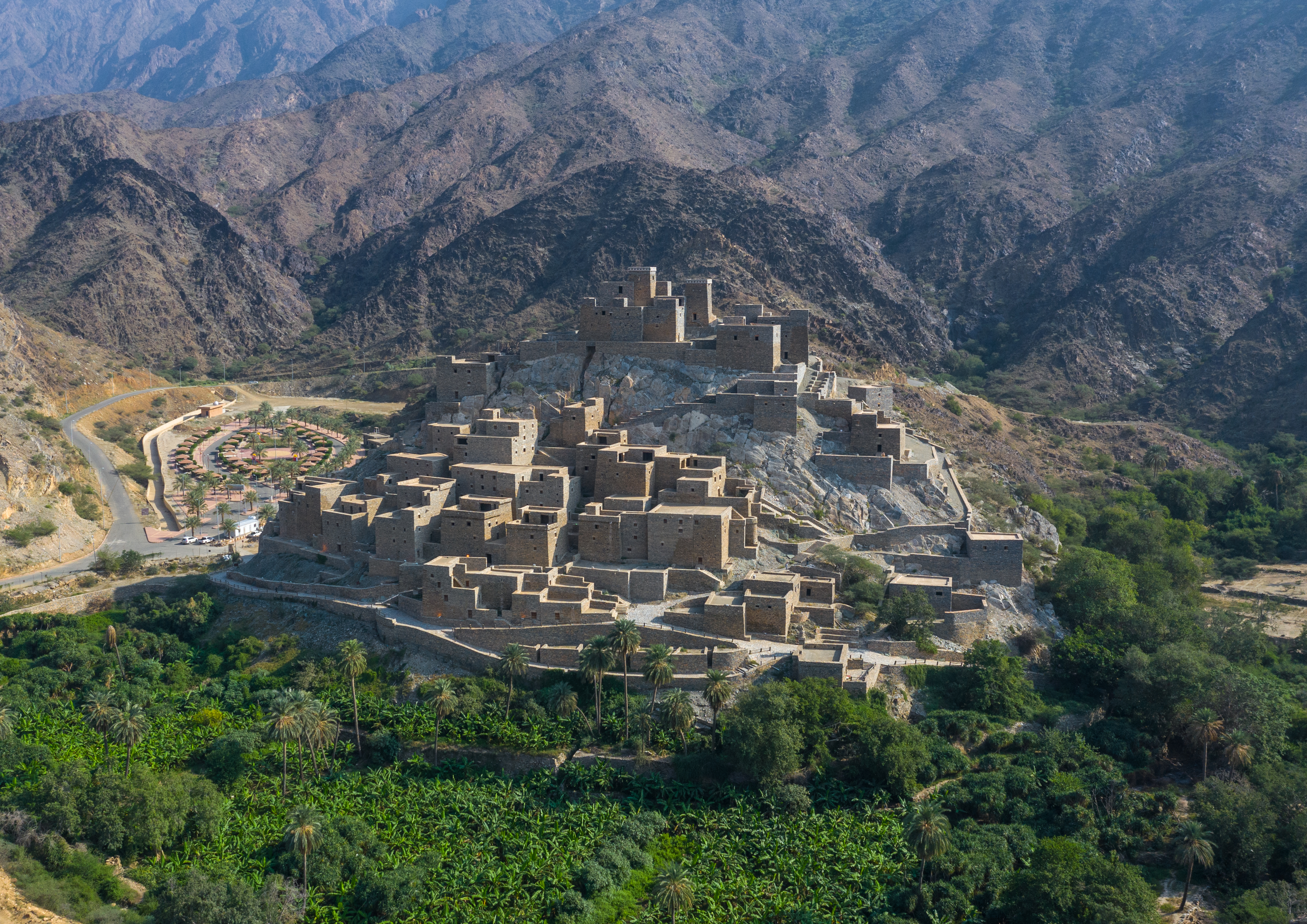
Dhee Ayn village, which was abandoned around 30 years ago, is a 400-year-old stone settlement built on top of a hill in the Al-Bahah region. The houses of the village itself are made not of marble, but of stone. The village earns its "Marble Village" nickname for the rocky outcrop upon which it was built -
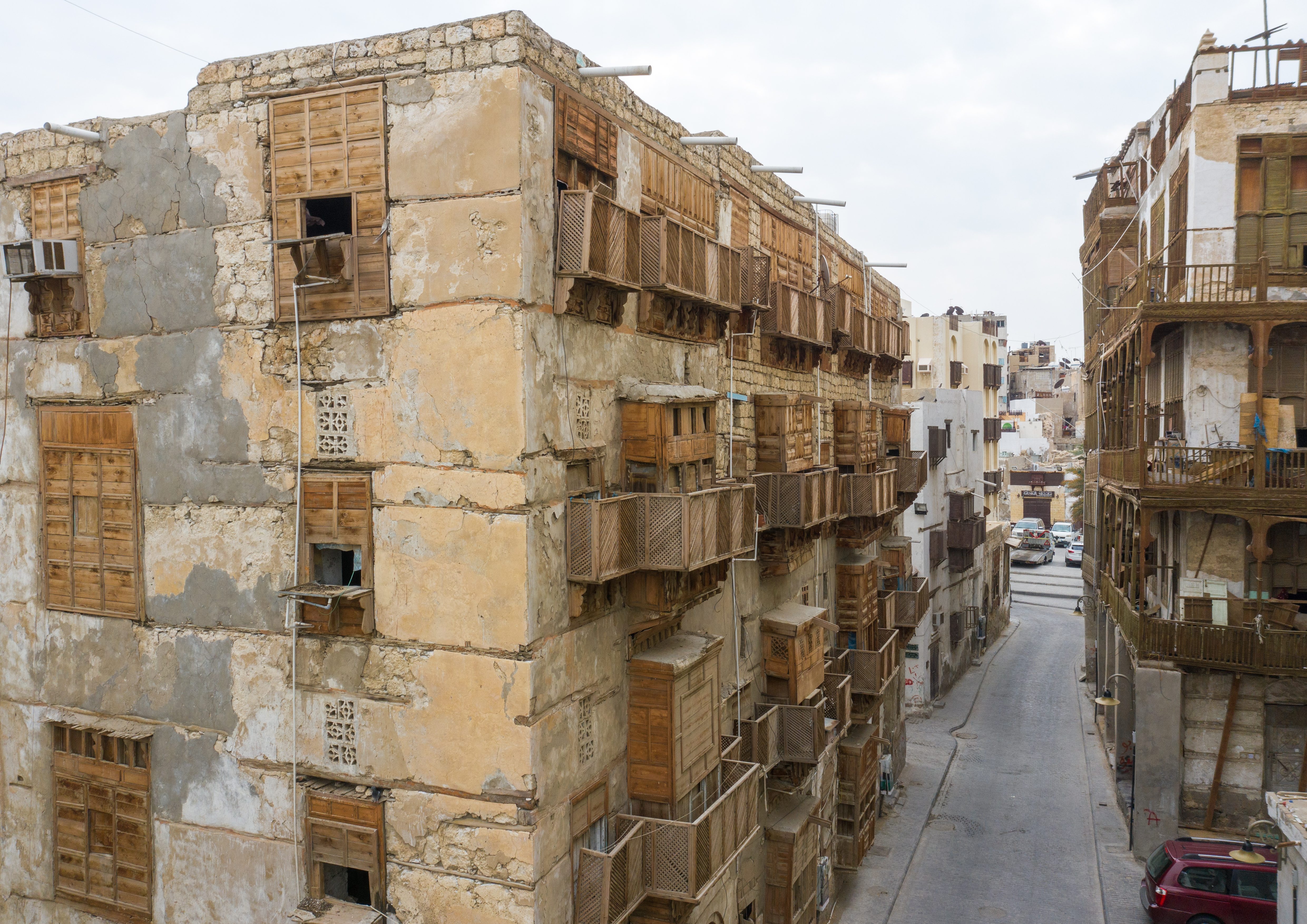
Old houses in the al-Balad quarter of Jeddah, now a UNESCO World Heritage site. Work is ongoing to conserve them, overseen by the Ministry of Culture. Tall buildings are covered with ʹmashrabiyaʹ, wooden shutters that allowed women to see without being seen. Few Saudis live in the old city these days. The neighbourhood is home to Somali, Pakistani and Yemeni refugees, who survive in precarious conditions – the area floods regularly, killing hundreds when the heavy rains reach the coast -
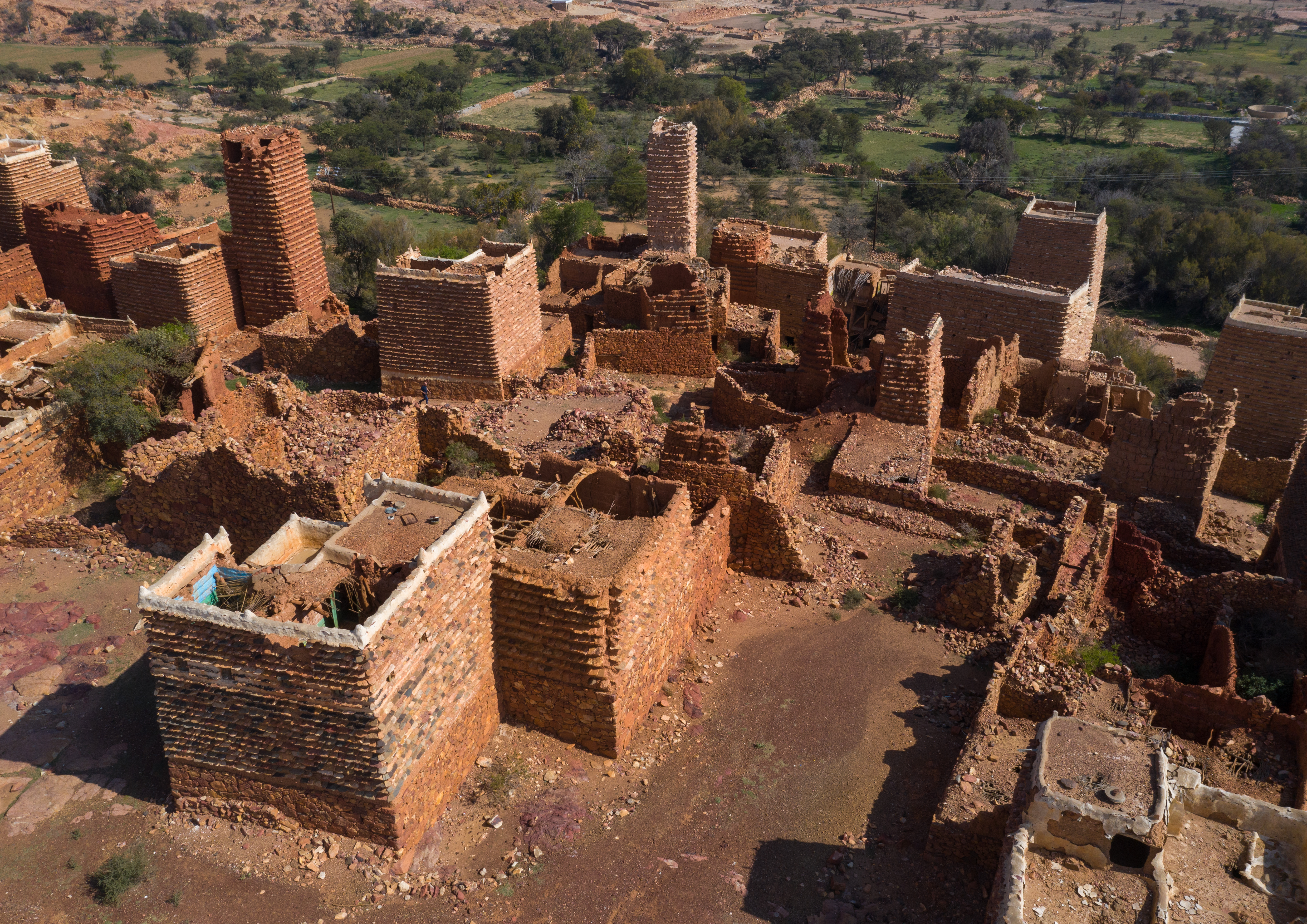
This village in Asir province features houses made out of unique red mud and stone. While the properties are now crumbling, colourful murals still decorate the interior walls. In these houses, the ground floor was used for the livestock. The next level was for human accommodation, complete with small windows to keep out both the heat and intruders. Further up the building, the windows became larger to let in more light as well as cooler air -
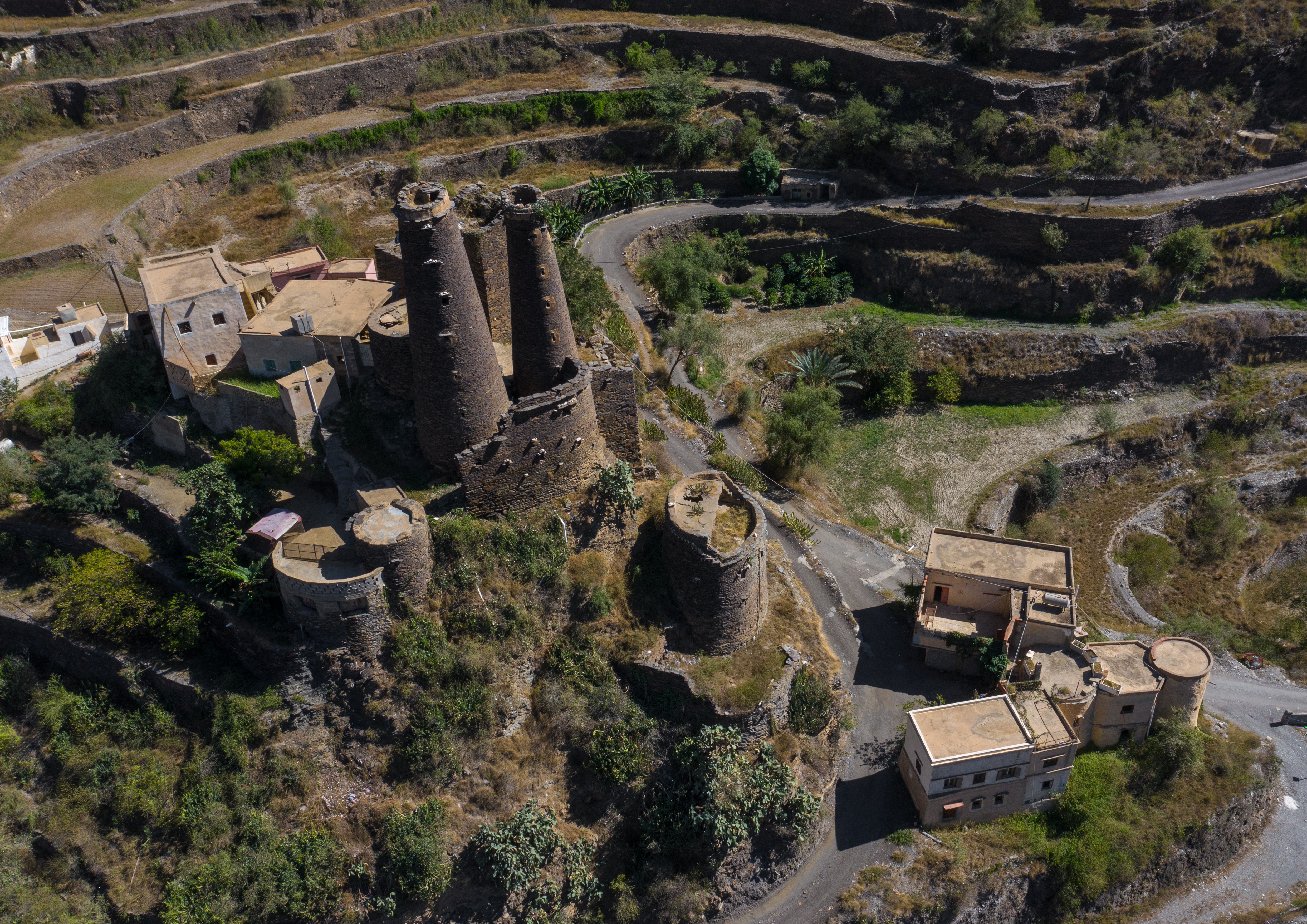
Traditional stone watchtowers stand tall in Addayer village, province of Jizan. The terraced land around the buildings allows locals to grow coffee in this remote mountainous area. Saudi people are very concerned about their privacy, but they enjoyed the use of the drone near their houses – discovering for the first time what their land looks like from above -
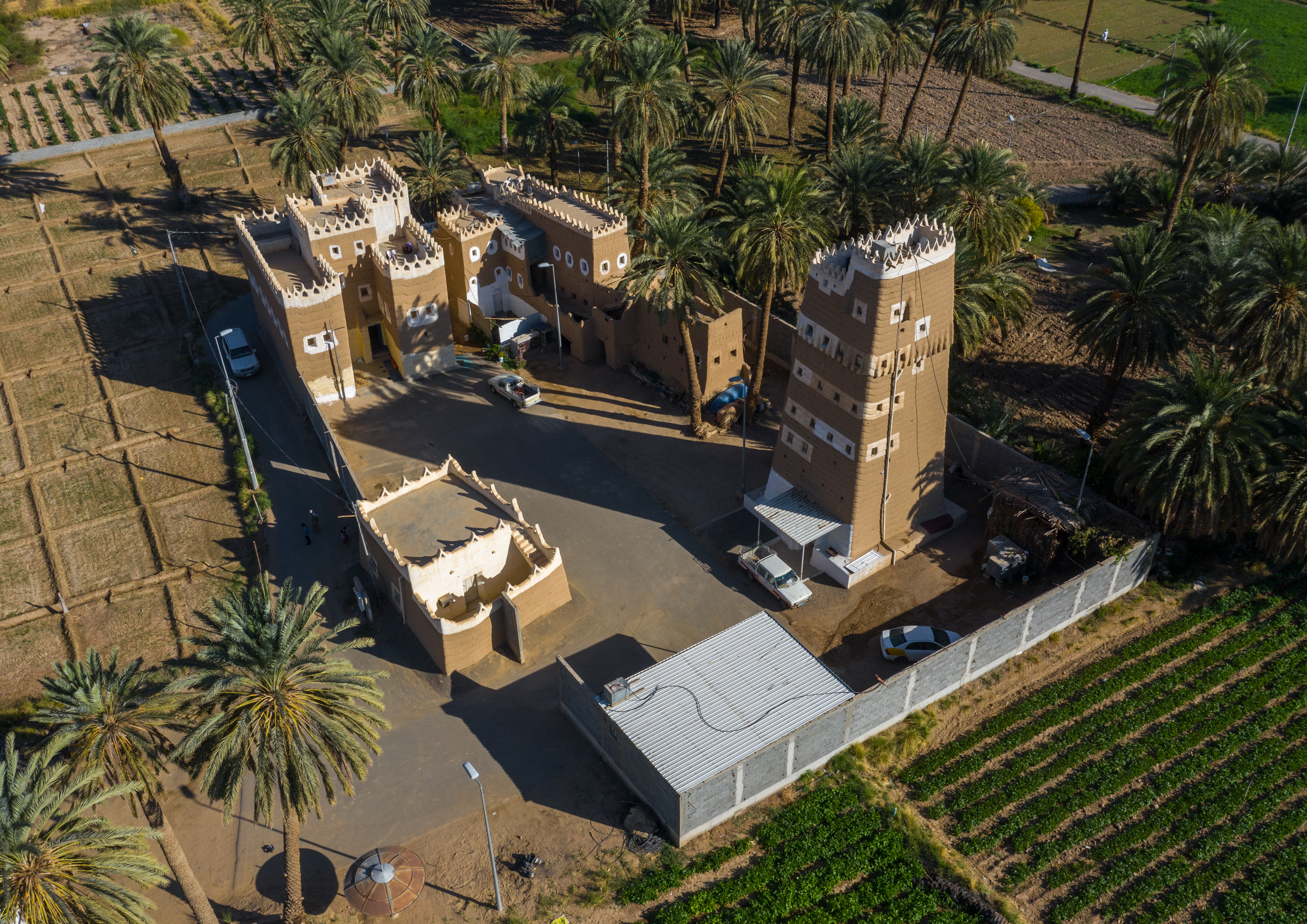
A mud house on a farming complex near the city of Najran. The farm buildings in this area look like small castles with crenellations. This defensive architectural element reveals that the local people lived in continous fear of attack. Nowadays, visitors are more likely to find themselves being invited in to share a snack of dates dipped in hot ghee -
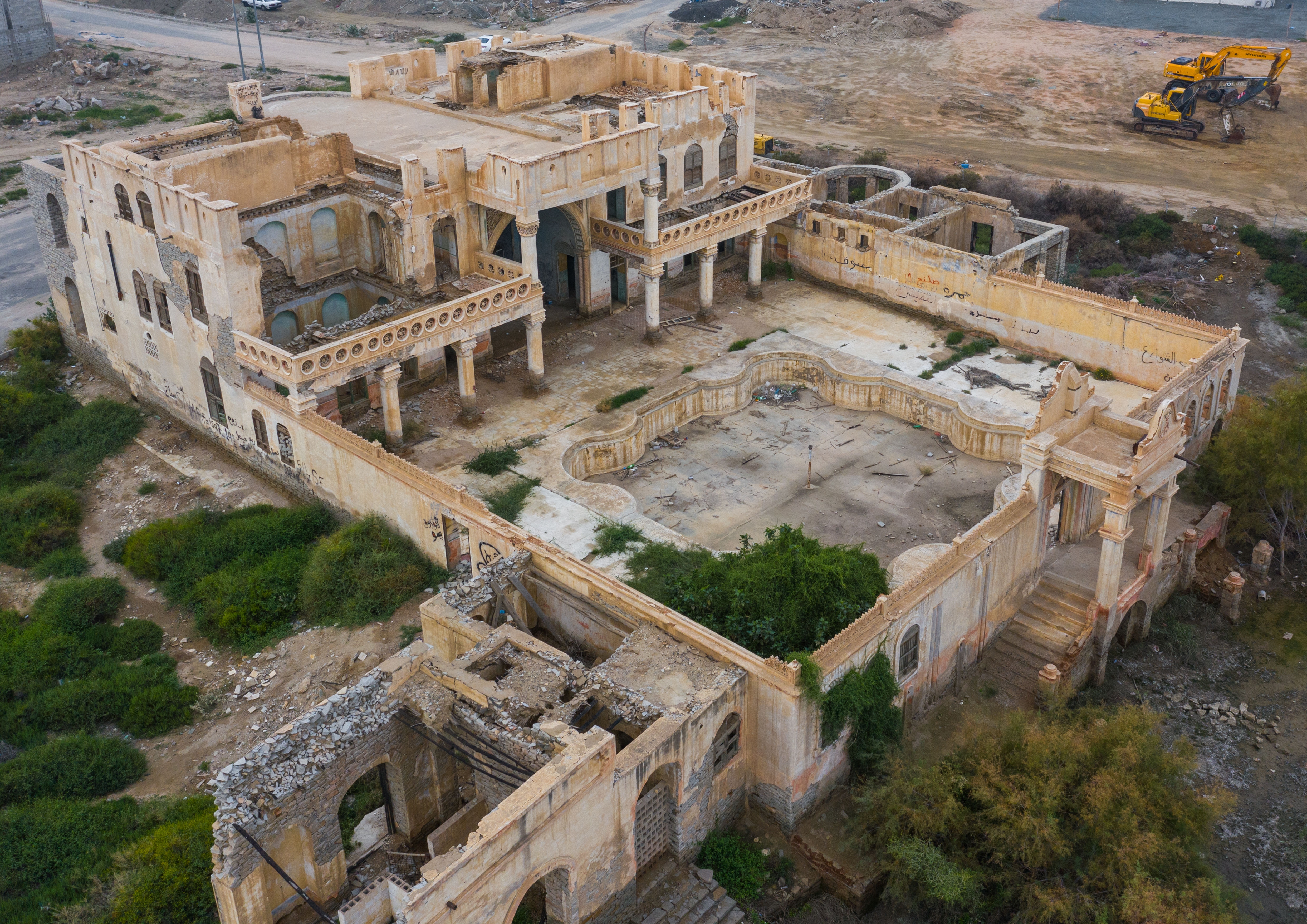
A view of the abandoned Abdullah al-Suleiman palace in Taif, Mecca province. Many old palaces mixing Ottoman, Arab and Art Nouveau are just waiting for a cash injection from sponsors to be renovated. But help never comes and many are left to go to wrack and ruin, threatened by real estate speculation -
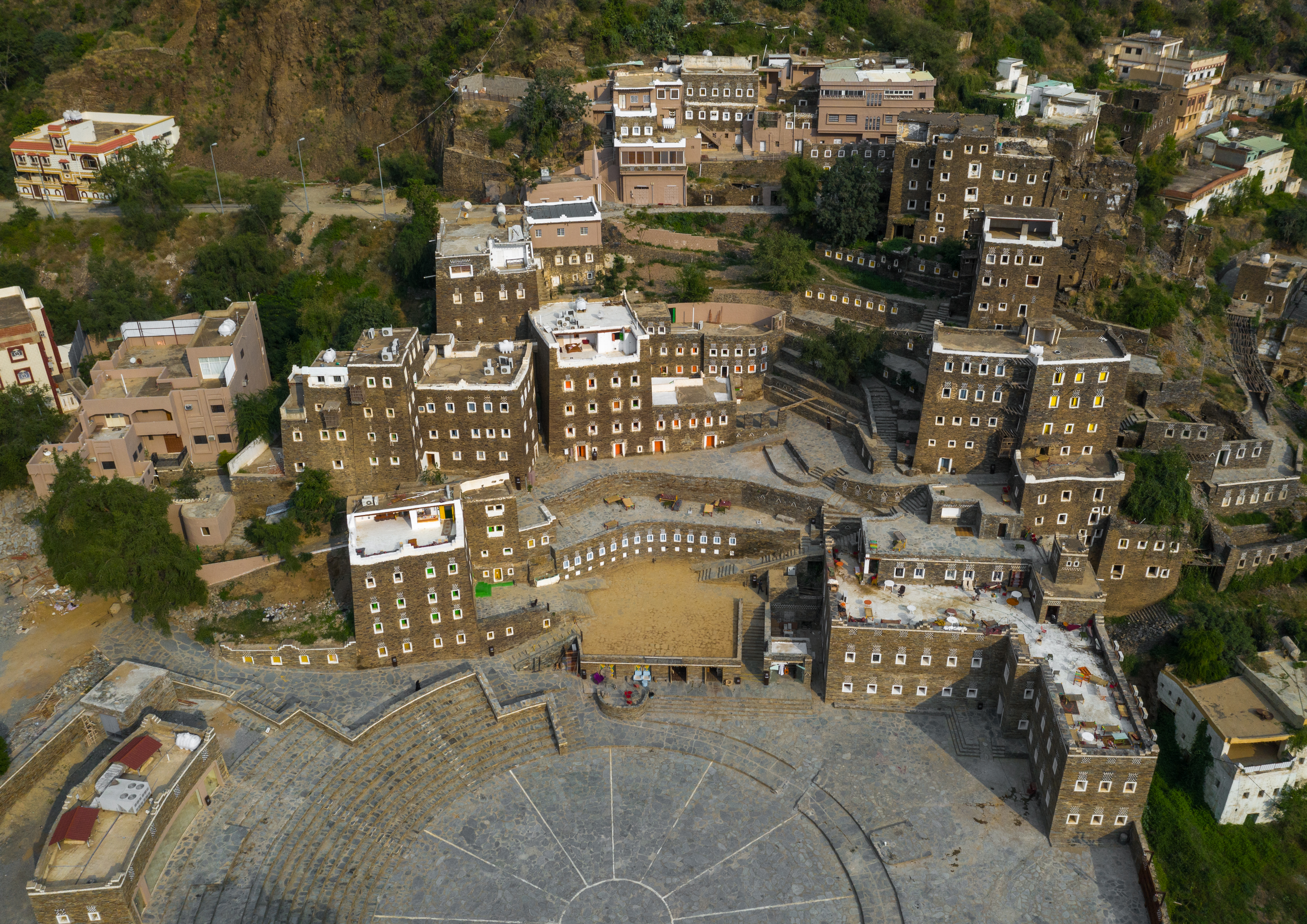
A bird's eye view of Rijal Almaa, a village located in Asir province. This village was abandoned by local people around 30 years ago in favour of modern houses with electricity and running water. In a bid to save the ancient buildings, the village has now been turned into a huge open-air museum. The buildings are unique architecturally, with slabs of locally quarried stone
https://qantara.de./en/node/11283
Link
To all image galleries
